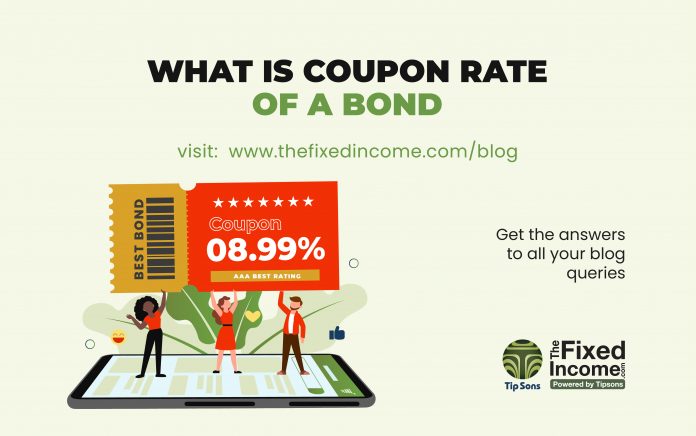

As noted in the previous two blogs on YTM and market price, another key metric for bond investing is the coupon rate.
COUPON RATE OF A BOND
A coupon rate, simply put, is the interest rate at which an investor will get fixed coupon payments paid by the bond issuer on an annual basis over the period of an investment.
In other words, the coupon rate on a bond when first issued gets pegged to the prevailing interest rate, and remains constant over the duration of an investment.
A point to note is that not all bonds attract coupon payments. There are zero coupon bonds too which are generally issued at a discount, however do not pay any coupon payments. Also do note that not all bonds attract a fixed coupon payment. There are floating rate bonds where the coupon rate is reset after fixed intervals, mostly every 6 months.
Another term one comes across in the context of coupon is the current yield.
Current yield of a bond is the percentage return an existing bond will provide to an investor for any given year during the term of the investment, and equals coupon rate ÷ market price. Current yield can also be calculated as coupon rate × (face value ÷ market price). Note, the current yield of a bond when issued, will be the same as the coupon yield as there would have been no movement in the price of the bond yet. It’s only when a bond starts trading in the secondary market, when the current yield will/may differ from the coupon yield as the bond’s market price would now fluctuate subject to its demand and supply and other contributing factors.
RELATION BETWEEN COUPON RATE AND MARKET PRICE/YTM
A movement in the coupon rate impacts the market price and effectively the YTM. We looked at 2 scenarios in YTM and it’s Inverse Relation with Market Price, where under Scenario 1 how an increase in the coupon rate of a newly issued bond drives the market price down and results in an increase in the YTM. And under Scenario 2 how a decrease in the coupon rate of a newly issued bond drives the market price upwards resulting in a decline in the YTM.
While one of the previous blogs, What is the Market Price of a Bond, talks about the inverse relation between the market price and coupon rate.
YTM and coupon rate are directly related. What that means is that a rise in the coupon rate of newly issued bonds will cause YTM to increase, and a fall in the newly issued bonds will cause the coupon rate to decrease. Note that the coupon rate of an existing bond can not be changed, as it is fixed in nature. Except for floating bonds which offer variable coupon rates which are reset periodically. Change in coupon rates is driven by interest rate change and they move in the same direction.
Do note that the interest rates, as part of the monetary policy, are not the only driving factor causing a movement in market price and YTM. There are other factors to be considered too including the demand and supply of a bond, plus the credit rating of a bond issuer.
























